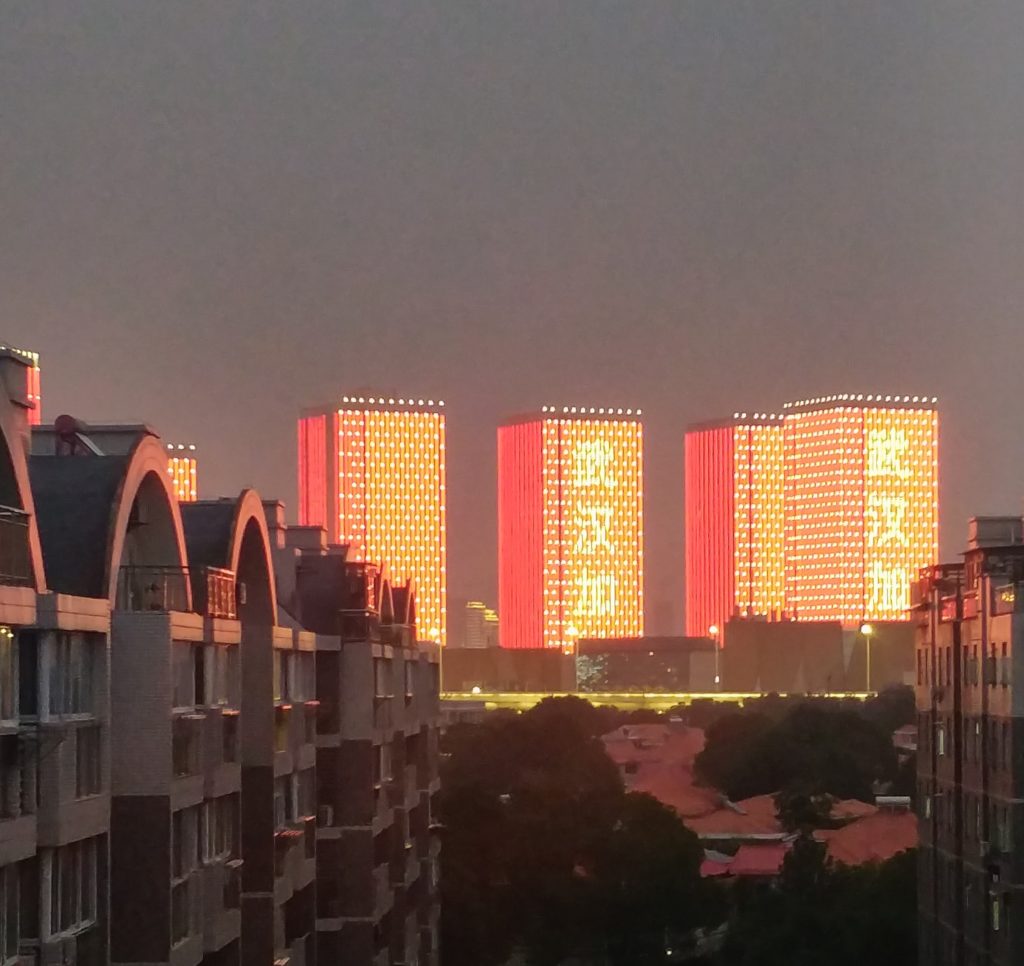
China’s Hubei Province and Ohio joined the Sister Cities Program as partners in 1979 through the efforts of Governor James Rhodes. The two areas have shared cultural and business opportunities through the years. Now we share the coronavirus.
How do Ohio and the Hubei Province stack up against one another in dealing with the coronavirus outbreak? I thought it might be useful to take a look.

I have the unfortunate perspective of living in Wuhan, the Hubei Province capitol, and Columbus, the Ohio capitol, during their initial outbreaks.
These observations come from a nonscientific perspective but one involving three months of living in the outbreak.
Initial government response
The Wuhan City government and the Hubei Province leadership considered the initial outbreak a “false social media rumor” according to a member of the city’s 30-member Executive Committee.
This January 2nd comment came from a person who I worked with at the Chiangjiang Weekly, the city’s English newspaper, after China reported its first virus cluster on December 31, 2019.
The province dropped the denial in January and quarantined the city January 23, leaving Wuhan unprotected for a minimum of 24 days.
Even though Ohio reported its first case March 9. Governor Mike DeWine began issuing restrictions a week before by cancelling the Arnold Classic in Columbus with the advantage of knowing and acting on the severity of the virus

Public response
Wuhan citizens immediately hunkered down once the quarantine went into effect. The city of 11 million people had minimal traffic and every citizen in public wore a mask. People entering a grocery store or public office had their temperature taken. All other stores, banks, and offices closed.
Ohio traffic still remains fairly busy. Temperatures are not taken at public facilities. Citizens do not wear masks while many stores, banks, and offices remain open.
Hospitals
Wuhan’s eight hospitals became overrun with concerned citizens when news of the virus spread. This allowed the disease to infect those who came to the hospital without the virus. A Chinese doctor who works at the University of Chicago and was in Wuhan during the outbreak told me, “Don’t go the hospital if at all possible.”
Wuhan instituted policies which required those showing symptoms to go to local community centers where testing took place. Authorities sent them to the hospital if the individual had the virus.
The Cleveland Clinic and other Ohio hospitals are implementing similar concepts such as drive-through testing to limit the comingling of sick and healthy individuals.

Housing
A major difference between housing exists between Wuhan and Ohio cities. High-rise condominiums make up most housing in Wuhan and other major Chinese cities. Elevators and public spaces for residents provide more opportunity for the spreading of the virus.
Single-family and low-rise apartments constitute most housing options in Ohio. This allows for less casual contact between individuals. The reduced density reduces the chances of catching the virus while at home compared to the Hubei Province.
Travel
Wuhan’s quarantine shut down all airplane, train, and highway travel to and from the city. Also, all public transportation such as the subway system, buses, and taxis stopped serving the public. These remain in effect.
Ohio has not restricted travel in any fashion.
Follow-up
The Chinese government continues to tighten Wuhan residents’ personal freedom. Condominium communities began to purchase food in bulk and distribute it to residents, further reducing travel.
The government restricted Jianghan University teachers (where I taught) to their apartments. The school delivers food every three days.
Governor DeWine continues to close public places such as theaters, gyms, and restaurants but many people continue to go out in public.
Social impact
Chinese citizens follow the edicts of the government mostly by choice, not force. Old and young do what the government believes is necessary to stem the coronavirus. A 5,000-year-old homogeneous culture helps create this compliance.

The length of the quarantine, however, is testing the Wuhan people’s patience. Reports from Wuhan and comments from my WeChat account show the emotional and economic toll the quarantine places on its citizens. Physical abuse, suicides, a lack of money, and civil unrest continue to be reported.
Wang Zhonglin, Communist Party secretary in Wuhan, recently posted on social media the need for citizens to learn gratitude for the party’s effort. Angry citizens immediately responded, feeling as if they were the ones who deserve the credit.
Some Chinese blame the government for covering up the initial outbreak and arresting eight doctors who tried to inform the public on social media, including the 34-year-old Dr. Li Wenliang who has since died of the virus.
Media reports show America’s young to be less likely to take the coronavirus as seriously as their Chinese counterparts. Recent media photos of thousands of young people on the beaches of Florida flood the Internet. Also some still believe the virus is a media-concocted story to sway U.S. political opinion.

Conclusion
Experts question the long-term effectiveness of isolation from a medical, economic, or social perspective. But it makes obvious sense that avoiding people decreases the risk of contracting the virus in the short-term. The question becomes: Are we all destined to contract the coronavirus sooner or later?
The number of new cases in the Hubei Province has dropped to a handful. If China relaxes the province’s restrictive policies and cases return then the strategy’s effectiveness will be questioned worldwide.
Ohioans willingness to sit in their homes for months like the Wuhanese does not seem promising. But if cases and deaths spike in the coming weeks then a new reality may set in on Ohioans.
China’s reluctance to admit the coronavirus existed created the opportunity for it to spread. Once they understood the magnitude of the problem, the central government took over the Hubei Province and instituted strict guidelines.
Ohio had the benefit of knowing what was coming and Governor Mike DeWine acted with strong leadership skills. However, Ohioans’ activities remain much greater than what was seen in Wuhan. Also, the federal government’s slow response hurts local efforts.
A less-than-unified approach by Ohio residents and the federal government leaves the state at risk. The Chinese started slow but then kicked it into high gear to slow the spread of the virus. Questions still remain, however, if that strategy helped or simply delayed future outbreaks in Wuhan.
Ohio and the country seem caught between a rock and a hard place. Total lockdown hasn’t shown yet that it stops the spread of the virus and suggesting people should stay home offends some Americans sense of personal freedom.
Maybe in the end, none of it matters. The virus simply has to run its course. I don’t know.
I want to say thank you to all the care givers around the world who put their lives on the line every day and to those who have died trying to save fellow humans like Dr. Li. They are heroes.

Also, the people and my friends of Wuhan deserve thanks for staying strong in limiting the spread of the coronavirus. This has been a terrible strain on all of you. To those conspiracy theorists who want to blame the Chinese, I can tell you my friends who live there are suffering but stood strong.
This comparison isn’t meant to pick a winner. No winners exist. Ohio and the Hubei Province remain Sister Cities, fighting together to solve the crisis of a lifetime, the coronavirus. We need to support one another as families do when bad times come. I hope this information helps a little. Stay safe.
John McGory is now living in Columbus, Ohio. He is an author who wrote Seeking Balance: The ultimate English-speaking guide for the shy, foreign, or frustrated.
